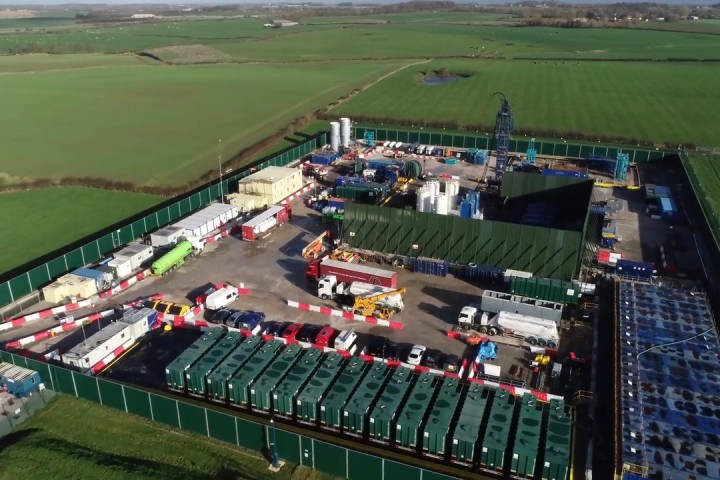‘Concerning’ Leaks of Climate-Changing Methane Gas Reported at Fracking Site

Cuadrilla reported four spikes in methane above levels set by authorities since it began its controversial operation in October.
The largest event saw concentrations of the climate-warming gas rise to around 15 times higher than normal background levels.
Workers attempted to burn the gas as they released it from the well, but it failed to catch light and was released into the air.
Venting unburned methane at the site is banned by the Environment Agency “except where necessary for safety reasons”.
Besides providing a source of fuel, methane is a potent greenhouse gas with the power to warm the planet up to 84 times more than CO2.
Controlling leaks from fracking sites is therefore vital if the industry wants to achieve its stated goal of providing a cleaner alternative to coal.
Three of the spikes recorded by Cuadrilla took place in January, with the highest one pushing methane levels to 30.5ppm.
The fossil fuel company said measurements by the British Geological Survey before fracking commenced had recorded far higher methane levels of up to 70ppm at the site.
But Dr Grant Allen, who conducted the BGS analysis, said it was not fair to present this as any kind of baseline.
“This is not normal. Background methane concentration is around 2 ppm,” he said, noting that “very rare” peak levels before fracking began at the site were generally around 7 ppm.
In their report, BGS attributed the earlier spike to emissions from a nearby dairy farm. Any reading above 7.1ppm recorded by Cuadrilla must be reported to the Environment Agency.
While the leaks from the Preston New Road site are not enough to hamper the UK’s efforts to tackle climate change, Dr Allen said they must be taken seriously if the industry wants to expand across the country.
“Methane emissions such as this are very much a concern regarding the industry’s carbon footprint and contribution to greenhouse gas budgets,” he said.
“Such concerns exist because of the potential cumulative impact of a future scaled up industry in the UK and how that might affect the UK’s stated emissions targets.”
If shale gas – which contains methane – is to be cleaner than coal and serve as a “bridge fuel” to green energy promised by the government, the industry must ensure no more than 2 per cent of it is vented into the air.
While it is too early to know if Britain’s fledgeling operations will stay below this limit, data from the US shows its expansive fracking industry is close, at around 1.6 per cent.
Despite these worries, Cuadrilla’s environmental manager Nick Mace said they were “very proud” of their monitoring programme, which he said showed the company’s commitment to the environment.
“The absolute level of methane emissions over the 12 month reporting period is reassuringly tiny,” he said, noting there were no health consequences from such short term emissions.
Cuadrilla has endured a rocky few months at the Lancashire site, facing repeated disruptions due to earthquakes and bitter opposition from campaigners angry about its environmental impact.
A spokesperson from Preston New Road Action Group said news of the recent spikes were a “major concern” to local residents.
“Even after only a partial frack we are seeing impacts on the air we breathe. We should be reducing gases that contribute to climate change rather than increasing them,” they said.
Industry leaders have claimed fracking will never take off in Britain unless earthquake limits are raised, but the government has so far resisted their calls.
